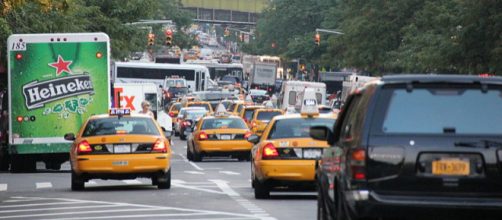Flying taxis could soon become a reality to ease traffic congestion in large cities. Boeing already has plans on its drawing board to test fly the vehicles by 2020 in Dallas and Dubai. Boeing CEO Dennis Muilenburg has confirmed that prototypes of flying taxis are undergoing tests. This mode of transport will have vertical take-off and landing Vtol facilities and would use the aerial route to ferry people from one place to another as cabs do.
Daily Mail UK reports that proper rules would have to be evolved to cater to this revolutionary concept. The idea gained momentum after Boeing acquired an aviation and aeronautics research company which was working on a project to develop an electric VTOL plane for the Defense Department.
The future of road transport
The expectations are high for electric VTOL plane because the flying taxi would be a boon to transportation in areas with dense population and where road traffic is heavy. Special systems like 'urban vertiports' would have to be developed so that commuters can access the flying taxi. Boeing has set 2020 as the date for a test flight of these vehicles in Dallas and Dubai.
Uber has a similar project and believes that flying taxis would be the ultimate commuting option in large cities. It feels it can begin operating these vehicles within the next five to 10 years and expects to launch an airborne version of its ride-hailing app in 2020. It would be the UberAIR.
The concept has many takers
Boeing and Uber are not the only ones who have zeroed in on this eco-friendly mode of public transport because the flying taxi would be powered by electricity. NASA is planning for a system consisting of autonomous and piloted vehicles to carry passengers and cargo in urban areas. It has labeled it as Urban Air Mobility. Some companies have already created prototypes, and there is tough competition to decide the leader of the pack.
The VTOL technology is ideal for congested localities and can be adapted easily, but it would require a high level of artificial intelligence and sensor technology. Moreover, the manufacturers and developers would have to abide by the rules set by the Federal Aviation Administration to ensure incident free and safe travel.
The concept is similar to that of a helicopter; the difference would be the propulsion system. The helicopter uses fossil fuels but the flying taxi will operate on electricity and could provide opportunities to go pilotless by using robots and artificial intelligence.


